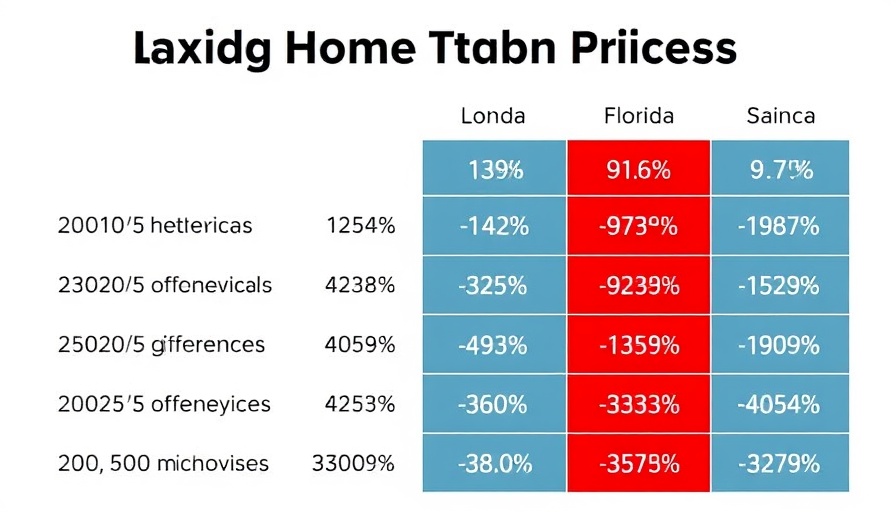
Florida's Price Surge: What You Need to Know
In the past couple of years, Florida has become synonymous with skyrocketing home prices. With prices surging by an astounding 30% during 2022 alone, many wonder how sustainable this growth really is. The reasons behind the surge are multifaceted, including delayed pandemic demand and Florida's appeal as a retirement haven.
However, the ongoing economic landscape suggests a shift. Current analyses indicate a housing cost-to-income imbalance ranging from 20-40% across various Florida markets. This means that while home prices have soared, local incomes have stagnated. Historically, such scenarios lead to significant market corrections, a trend that has yet to materialize in Florida.
What Lies Ahead: A Modest Forecast?
As mortgage rates remain high, the influx of new buyers is expected to dwindle, contributing to the growing inventory of homes. The unique demographic makeup of Florida, which leans heavily on retirees, complicates matters. As older homeowners look to transition into assisted living or wish to downsize, we face an increasing number of homes available on the market, which creates downward price pressure.
The Divergent Realities of Florida's Metro Areas
Research supports this assessment, showcasing stark contrasts between various Florida metros. Areas in southwest Florida, having experienced the steepest price hikes in 2022, are now exhibiting signs of economic weakness coupled with faltering home prices. Meanwhile, cities such as Jacksonville and Orlando, less reliant on retiring populations, still encounter pressure due to the overall residential real estate correction. Understanding local conditions is crucial for investors and realtors in navigating these shifting dynamics.
The Bigger Question: Is It Time to Make a Move?
For investors, it’s a critical juncture. Some industry experts are suggesting that swift action is necessary. Selling now may be prudent, even if it means reducing asking prices significantly. Holding out for favorable conditions in the coming months could lead to being caught in a broader downturn.
Making Smart Investment Decisions in Turbulent Times
What does this all mean for you as an investor or realtor? Understanding the trends in the Florida market can help you navigate this complex situation more effectively. Staying informed and proactive can make a difference. Engage with local data, keep an eye on economic indicators, and connect with other investors to gain insights.
The current market may feel unsettling, but those who adapt and respond wisely can still find opportunities amidst the challenges. Explore varied local markets, assess where demand is yielding stability, and consider diversification strategies that could safeguard your investments against downturns.
 Add Row
Add Row  Add
Add 




Write A Comment